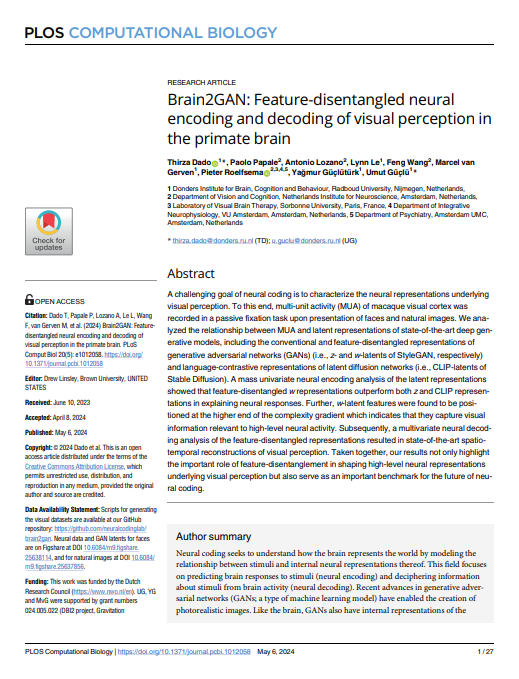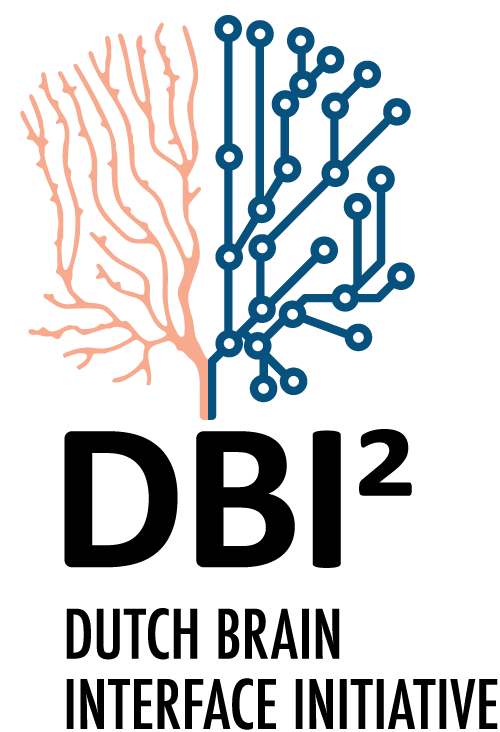Scientific Publications
DBI2 publications
Brain2GAN: Feature-disentangled neural encoding and decoding of visual perception in the primate brain
Neural coding seeks to understand how the brain represents the world by modeling the relationship between stimuli and internal neural representations thereof. This field focuses on predicting brain responses to stimuli (neural encoding) and deciphering information about stimuli from brain activity (neural decoding). Recent advances in generative adversarial networks (GANs; a type of machine learning model) have enabled the creation of photorealistic images. Like the brain, GANs also have internal representations of the images they create, referred to as “latents”. More recently, a new type of feature-disentangled “w-latent” of GANs has been developed that more effectively separates different image features (e.g., color; shape; texture). In our study, we presented such GAN-generated pictures to a macaque with cortical implants and found that the underlying w-latents were accurate predictors of high-level brain activity. We then used these w-latents to reconstruct the perceived images with high fidelity. The remarkable similarities between our predictions and the actual targets indicate alignment in how w-latents and neural representations represent the same stimulus, even though GANs have never been optimized on neural data. This implies a general principle of shared encoding of visual phenomena, emphasizing the importance of feature disentanglement in deeper visual areas.
Marcel van Gerven, Pieter Roelfsema, Yağmur Güçlütürk, Umut Güçlü
https://doi.org/10.1371/journal.pcbi.1012058
Neural encoding, Neural decoding, Generative adversarial networks (GANs), Feature disentanglement, Visual perception

Research areas
Want to join DBI²?
Browse the vacancies page
Contact details
Radboud University
DBI2 Office
Heyendaalseweg 135
6525 AJ Nijmegen
